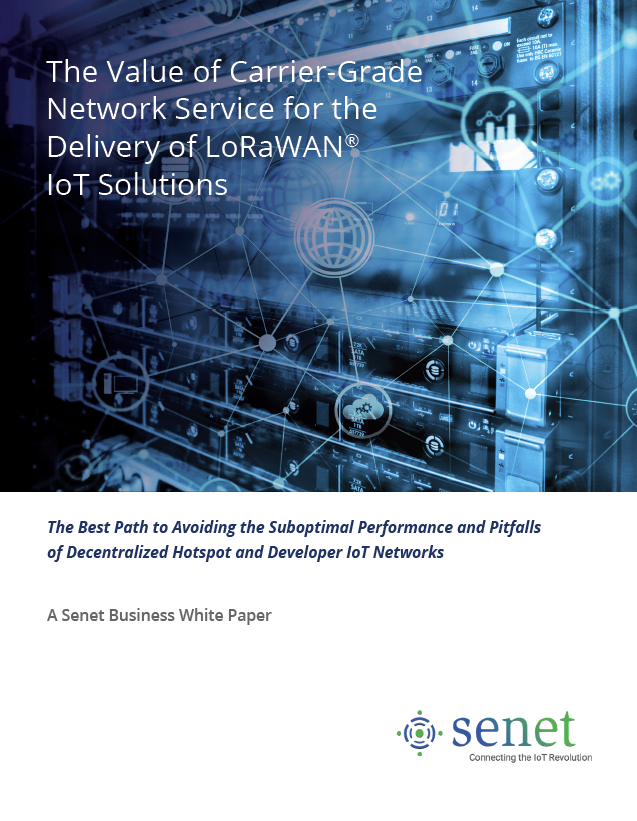The Value of Carrier-Grade Network Service for the Delivery of LoRaWAN IoT Solutions
The Best Path to Avoiding the Suboptimal Performance and Pitfalls of Decentralized Hotspot and Developer IoT Networks

This white paper addresses the need for clarity on the viability of LoRaWAN® networks for critical infrastructure and essential business Internet of Things (IoT) applications in utility, municipal and enterprise markets. It spells out the requirements for the carrier-grade level of performance such applications require. It also explains how those requirements are being met by the LoRaWAN cloud-based operations platform supplied by Senet, and in contrast to other approaches which fail to meet those requirements.
Benefits from low-power IoT applications can and should be realized without compromising on Quality of Service (QoS) requirements, project-based Service Level Agreements (SLA’s), and technical flexibility. As IoT deployments continue to scale and solution requirements become more predictable, the distinction between carrier-grade Low Power Wide Area Networks (LPWANs) and those that fail to meet carrier-grade specifications is becoming more apparent. This distinction has drawn clear lines between what are defined as commercial and consumer grade networks, with commercial applications for critical infrastructure and essential business needs trending toward utilizing carrier-grade networks throughout their evolution from development to massively-scaled deployments.